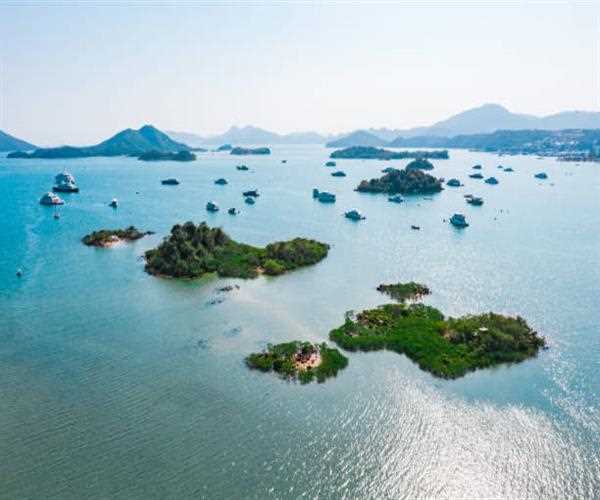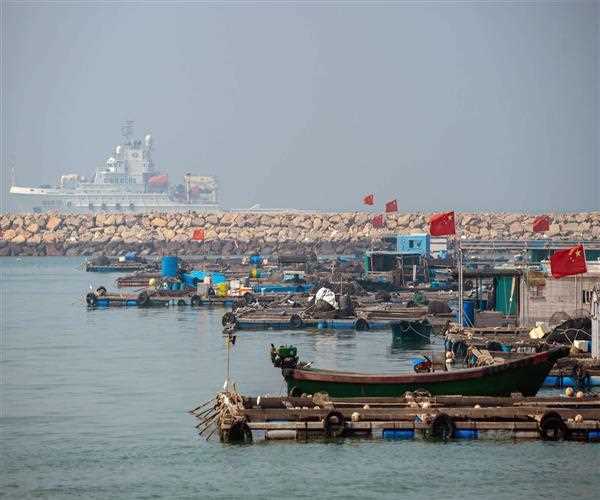Search here

15-Jul-2023 , Updated on 7/15/2023 10:57:13 PM
Explore the South China Sea Dispute
Highlights
- The dispute involves conflicting island and maritime claims in the South China Sea by several sovereign states, namely Brunei, the People's Republic of China (PRC), Taiwan (Republic of China/ROC), Indonesia, Malaysia, the Philippines, and Vietnam.
- The disputes involve the islands, reefs, banks, and other features of the South China Sea, including the Spratly Islands, Paracel Islands, Scarborough Shoal, and various boundaries in the Gulf of Tonkin.
- China has the most extensive claims in the South China Sea, and its actions in the region have been met with concern from other claimant states and the international community.
- The dispute has the potential to disrupt freedom of navigation and commerce in the South China Sea, which is a vital trade route for many countries.
- There have been several incidents of maritime standoffs and clashes between claimant states in recent years.
The dispute is a complex and sensitive issue, and there is no easy solution.
The South China Sea dispute is a complex and long-standing issue that involves competing claims to territory, maritime rights, and resources in the South China Sea. The dispute is primarily between China and the other countries that border the sea: Brunei, Indonesia, Malaysia, the Philippines, Taiwan, and Vietnam.
The South China Sea is a strategically important body of water that is home to important shipping lanes, fishing grounds, and potential oil and gas reserves. The dispute over the sea has the potential to disrupt trade, security, and economic development in the region.
History of the Dispute
The dispute over the South China Sea has its roots in the 19th century, when European powers began to colonize the region. China, which had long claimed sovereignty over the sea, was unable to effectively assert its claims during this period.
In the aftermath of World War II, China's claims to the South China Sea were revived. However, the other countries that border the sea also began to assert their own claims. This led to a series of clashes and skirmishes between the countries in the 1970s and 1980s.
In 1982, the United Nations Convention on the Law of the Sea (UNCLOS) was adopted. UNCLOS established a set of rules governing maritime boundaries and the rights of countries to resources in the ocean. However, China did not ratify UNCLOS until 1996, and it has never accepted the ruling of an international tribunal on the dispute.
China's Claims
China's claims to the South China Sea are based on the "nine-dash line," a U-shaped line that encompasses most of the sea. China asserts that the nine-dash line represents the historical boundaries of its territory. However, there is no historical evidence to support this claim.
In addition to its territorial claims, China also claims exclusive economic rights (EEZs) over large areas of the South China Sea. EEZs are areas of the ocean that extend 200 nautical miles from a country's coast. Countries with EEZs have the exclusive right to explore and exploit the natural resources in those areas.
The Role of ASEAN
The Association of Southeast Asian Nations (ASEAN) has played a role in trying to resolve the South China Sea dispute. In 2002, ASEAN and China issued the Declaration on the Conduct of Parties in the South China Sea (DOC). The DOC is a non-binding agreement that commits the parties to peaceful resolution of the dispute and to the maintenance of freedom of navigation in the South China Sea.
However, the DOC has not been effective in resolving the dispute. China has continued to build up its military presence in the South China Sea, and it has refused to recognize the PCA's ruling.
In 2016, ASEAN and China agreed to negotiate a Code of Conduct (COC) for the South China Sea. The COC is a more detailed agreement that would set out the rules for behavior in the South China Sea. However, negotiations on the COC have been slow, and it is not clear when the COC will be finalized.
Other Countries' Claims
The other countries that border the South China Sea also have claims to territory and EEZs in the sea. However, these claims are much smaller than China's claims.

Brunei, Indonesia, Malaysia, the Philippines, and Vietnam all claim the Spratly Islands, a group of small islands and reefs in the South China Sea. The Philippines also claims the Scarborough Shoal, a shoal located near the coast of Luzon.
Taiwan claims the entire South China Sea, including the Paracel Islands and the Spratly Islands. However, Taiwan's claims are not recognized by the international community.
The Dispute Today
The South China Sea dispute is a major source of tension in the region. China has been accused of militarizing the disputed islands and waters, and it has been criticized for its aggressive behavior towards other claimants.
In 2013, the Philippines took China to the Permanent Court of Arbitration (PCA), an international tribunal that is based in The Hague. The PCA ruled in favor of the Philippines, declaring that China's nine-dash line has no legal basis. However, China has refused to recognize the PCA's ruling.
The South China Sea dispute is a complex and difficult issue to resolve. However, it is important to find a peaceful solution to the dispute in order to ensure stability and security in the region.
Possible Solutions
There are a number of possible solutions to the South China Sea dispute. One possibility is for the countries involved to negotiate a settlement that would define the boundaries between their claims. Another possibility is for the countries to agree to jointly develop the resources in the disputed areas.
However, it is likely that any solution to the dispute will be difficult to reach. The countries involved have different interests and priorities, and they are reluctant to give up any of their claims.
The South China Sea dispute is a major challenge for the countries in the region. However, it is important to find a peaceful solution to the dispute in order to ensure stability and security in the region.
The South China Sea dispute is a complex and difficult issue to resolve. However, it is important to find a peaceful solution to the dispute in order to ensure stability and security in the region. The countries involved have different interests and priorities, but they must be willing to compromise in order to reach a solution. The international community can also play a role in helping to resolve the dispute.
The South China Sea is a vitally important body of water, and it is essential that the countries involved find a way to peacefully coexist in the region.

SEO and Content Writer
I am Drishan vig. I used to write blogs, articles, and stories in a way that entices the audience. I assure you that consistency, style, and tone must be met while writing the content. Working with the clients like bfc, varthana, ITC hotels, indusind, mumpa, mollydolly etc. has made me realized that writing content is not enough but doing seo is the first thing for it.
Join Our Newsletter
Subscribe to our newsletter to receive emails about new views posts, releases and updates.
Copyright 2010 - 2025 MindStick Software Pvt. Ltd. All Rights Reserved Privacy Policy | Terms & Conditions | Cookie Policy